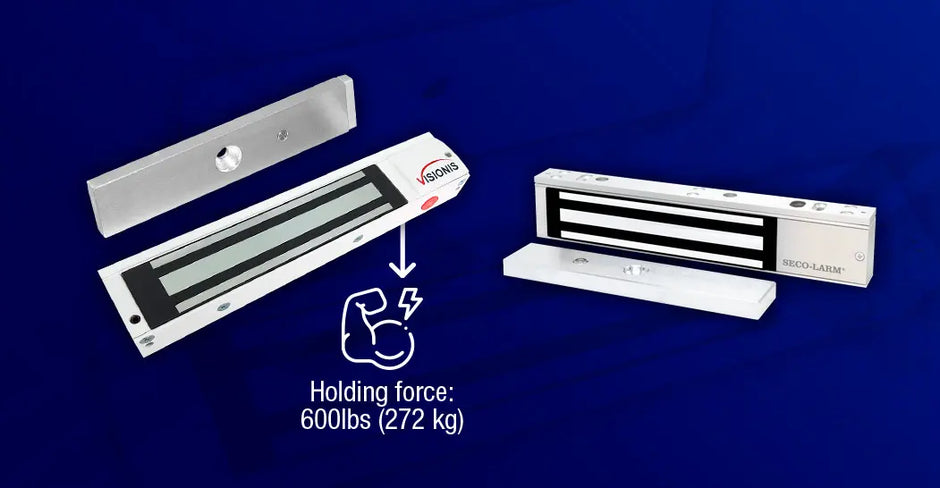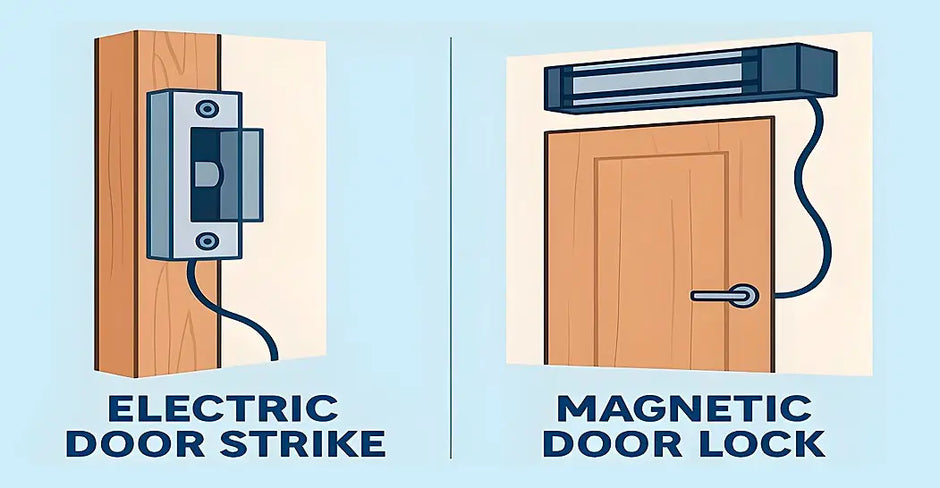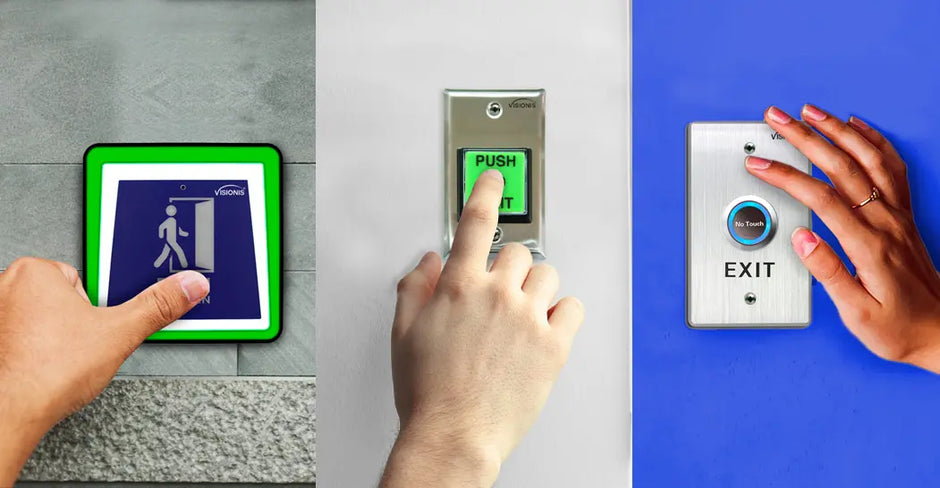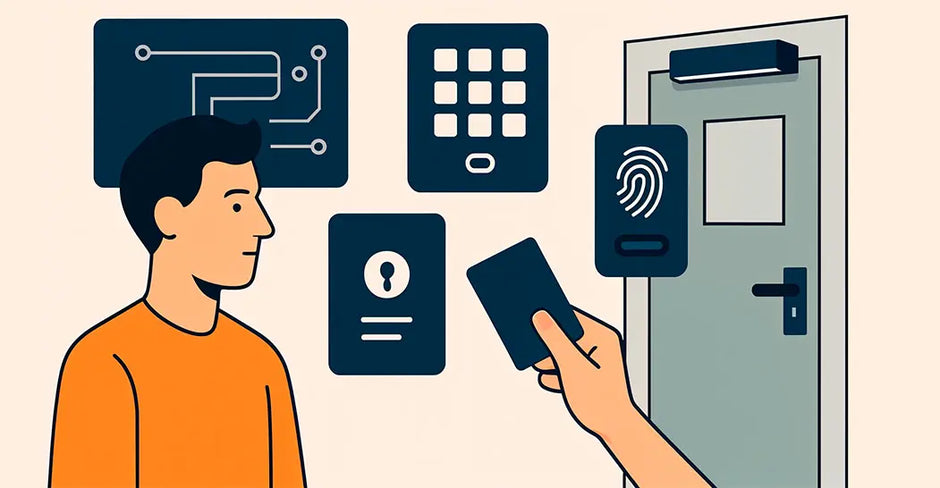Door Access Control System
Finding a door access control system may not be the easiest thing in the world to do. But, it doesn’t have to be so hard. As long as you research the different types of control devices, and how door access control systems works, you can be better prepared when it’s time to start your hunt for finding one to use in your business.
Start off by planning out where you want to have these devices installed. This guide will help you create that plan and get from the planning stage to the door access control system installation.
What to do before buying your Access control system
Time to get a pen and paper out, or just take notes on your computer, whatever works for you. For the planning stage, we’ll briefly go over the necessary points to learn about or decide on, before you start shopping for a door access control system.
Purpose
First, decide how you will use your access control system. Is it for a primary entryway door, particular cabinet or is it for a specific room within a building? In most cases, they’re used to keep out unauthorized people. But, you will need to know how much security would be necessary to accomplish that goal.
For example, if you intend to allow only employees into your building through the main door, you would need one type of access system. If you’re looking to let only specified employees into a personnel record room, you would need a more secure kind of door access device.
Also, figure out how many doors you plan on securing. This will determine whether a large system will be needed or a smaller one.
Type of Authentication
Once you know how you want to use your door access system, you can then determine what type of authentication you need to use. Authentication, in this sense, means how a person will show that they have permission to enter the building or a specific area.
You can use many different types, such as swipe cards, key codes, fingerprint, and facial recognition. Those who have the proper rights to enter through a door will have the correct method of authentication to gain access.
There are a few different ways that they can show that authorization. We’ll get a little more into this later, but for now just know that there are devices that will read cards, fingerprints, input codes, and even use a particular key.
When the control device determines that the person has permission to enter, it will allow the door to open for them to walk through.
Type of Locking Devices
There are many different types of locking devices to choose from. Deciding which one you want for your new security system will depend on where it’s being set up. You can find locking mechanisms for all sorts of entryways. Some of them include:
- Glass, Wood, and Metal Doors
- Standard or sliding doors
- Cabinet Doors
- Main Entryway Doors
- Interior Room Doors
Wired or Wireless
When it comes to the electronic access device systems, there are only two ways they can be implemented. You can use a wired or one of the wireless door access control systems. Here are the advantages that each one brings to door access control systems.
Wired
– Advantages
A wired control device is connected to the building’s current wiring. There usually isn’t any need to add more wires to install a door access device. Any sensors could also be connected to the wiring, eliminating the need for any batteries that would ultimately need to be changed in the future. Another great trait of wired systems is that there’s no interference with anything like electronic devices, which wireless devices sometimes deal with.
– Disadvantages
For older buildings, the wiring may not available or suitable in the area you want to install one of the devices. This would mean having wiring installed in that area at a much higher cost.
Wireless
-> Advantages
Wireless door access control systems are much easier to install than the wired version. You don’t have to worry about all that physical wiring that the wired version has. You can also move things around easier, or add more devices to your overall system.
-> Disadvantages
The wireless door access control systems don’t have as much reach as you get with the wired versions. Since they run on batteries, there isn’t enough power to send signals too far away from the main receiver. They would have to be installed close to it for it to be efficient.
The batteries would ultimately run out, so you would have to worry about replacing them from time to time. Also, you run the risk of interference from other electronic devices.
-> Budget
You will need to know how much you can budget for your security system. Then research the available products that fall within that budget amount. What can you use for your business that doesn’t break your budget? Choose what you can purchase that still meets the needs you have for an access controller device. Don’t forget to leave a little room for installation costs, in case you have to hire professionals to get yours installed.
Design your door access control system
When you design your control device plan, you’ll need to walk through an access control entryway at least in your mind. This will give you an idea of how door access control systems works, and what all you will need for your control device. To start off with, start asking yourself the following questions:
How will I get in and out?
You need to figure out how you’ll get in through the door and how you will get out. Let’s walk through some of the different devices that work for entry and for exiting.
Entry Devices
Remote Release- The door access control system is powered by electrical currents. The door is kept locked at all times. A person wanting entry would have to wait for someone on the inside to activate the door controller to allow the lock to disengage. This type is typically installed with a camera so the person requesting entry would be seen by the remote release operator. If access is granted, and the door would open.
Card Readers- This type of access control device allows a person to gain entry by swiping a card in the reader. The information on the card lets the control device know that the person has permission to enter, and the door would open to them. There is also the proximity card reader. Instead of swiping the card in a reader device, a sensor will read the codes off the card from a distance away.
Keyswitch- This is a more simpler access device. Entry is gained when someone inserts the proper key into a particular key switch plate. The correct key opens the lock on the door, and the person can enter.
Keypad- This is where you request access by inputting a unique code into the reader. A keypad device allows you to type your access code into it so that the door will unlock and open.
Fingerprint reader- This type of device uses your fingerprints to gain access to a room or building. The reader scans your prints and matches it with all the known prints saved in its database. If a match is found among those who have permission to enter, the door would then open to you. There are also devices that use handprints and retinal scans to recognize a person requesting entry.
Exit Devices: There are many types of devices controlling who gets an entry in an area. But, when one wants to leave through that same door, a different kind of equipment will be utilized. Here are some standard exit devices:
Push to exit buttons– Exiting a room or building, through an access controlled door, is as easy as pushing a button. A button is installed near the exit for you to push, to disengage the lock temporarily. Once it unlatches, you will need to open the door and leave before the latch re-engages.
Push exit bars- Doors with access controllers installed, sometimes, will have a bar attached the other side of the door. When one is leaving the area, they simply hit the push bar, and it will unlock the door so you can open it and exit.
Motion Sensors- A sensor is installed at the top of the door. It will sense when someone is within a predetermined distance away. This activates the controller to allow the door to unlock for a moment’s time so that the person can leave before the lock latches again.
How will I secure the door?
The locking devices used in a door access control system installation are what secures the door to keep everyone, without permission, out. There are several different options of locking devices to choose from. Some of those include:
Magnetic Locks- An electromagnetic lock comes with an armature plate. When the door is closed, the magnetic lock will attract the plate, using a current. This magnetic pull will not break unless the flow is broken by the door access device. Only then can the door be opened.
Electric Drop bolt lock- With the door in a closed position, the drop bolt will extend out from the door and lock into place with the door frame plate. An electrical current will hold the drop bolt in a locking position until the flow is interrupted by a signal from the control device.
Electric Shear Lock- This type of lock will install at the top of the door instead of the side like most locks do. This allows it to be less noticeable but still provides just as much protection. The door locking plate and the door frame plate will magnetically pull together and stay locked until a signal interrupts the magnetic pull.
Electric Strike- This locking device replaces a traditional strike plate used with deadbolts or drop bolts. When an extended deadbolt locks into the cavity of the strike plate, it stays put. When a signal is sent to the plate, the bolt keeper moves away and allows the extended bolt to move out of the cavity and enables the door to open.
How do I control the system?
A door access control system is run by software programs, which keeps tabs on everything that has to do with the devices installed on the property. They enable you to track who needs access rights for some regions of the building, and how many times they may have asked for access. You can also keep track of what’s going on at multiple doors.
The interface is easy to use when changes need to be made. Any employees who may not work there any longer can easily be removed from the access rights list. You can quickly change codes and swipe card data as well.
Choosing a Door Access Control Manufacturer and Vendor
When you’ve decided on how you want to use a door access control system for your business, and how door access control systems works for the types of devices you’d like to use, it’s time to go to the next step.
That step would be to pick a manufacturer and vendor to purchase it from and have it installed. Which one should you go with? To answer that question, you will need to look for one that has the following qualities:
Specializing in commercial-grade products- They need to know their way around commercial products for these access devices. Residential products are made for the needs that residential properties have, which are different than commercial buildings.
Know how both wired and wireless door access control systems work- Both versions are available, and they both have their advantages as well as their disadvantages for different types of situations.
Keep up to date on the latest technologies- They need to be well informed as technological advances take place in door access security. They should be able to answer almost any question you have regarding specific products and how they work.
Know how door access control systems works – This goes for all of them. They should know how each one works, so they can best offer advice for your situation.
Offer advice on the best system- They should offer information on what works best for your situation, regardless of its cost. Avoid those who automatically try to sell you on their highest priced products even when they clearly aren’t the best option.
Familiar with local codes- They should also be on top of local laws for what locks are required to use and what ones you can’t use on unique doors, like fire exits. If they’re not knowledgeable about the local requirements, then they’re not interested in helping you, so consider going somewhere else.
Installing the Network Attached Door System
Have it professionally installed whenever possible. A door access control system installation will be complicated if you have other devices, like fire prevention, installed. A professional will know how to add your new security system without interfering with any other programs.
They will also provide ongoing support after installation. Anytime you have questions or have problems with any part of the wired or wireless door access control systems; they should be there to help you, every step of the way.
If you plan on only one or two doors with straightforward systems, then maybe you could handle the door access control system installation on your own. Just make sure you know exactly how to get it set it up step by step before starting. Knowing how door access control systems works will help you when it comes to figuring out where each part will be installed.
Congratulations, now that you have your plan created, you’re ready to move forward and start looking for a door access control system that will keep your building secure.
We are FPC Security the cool way to shop for security







